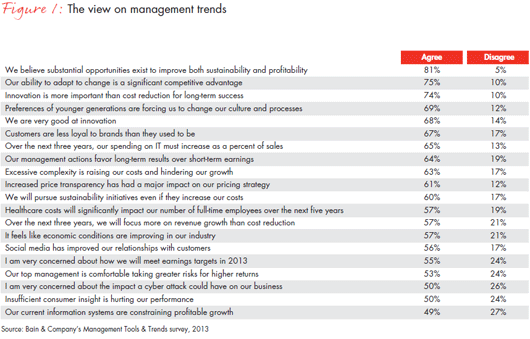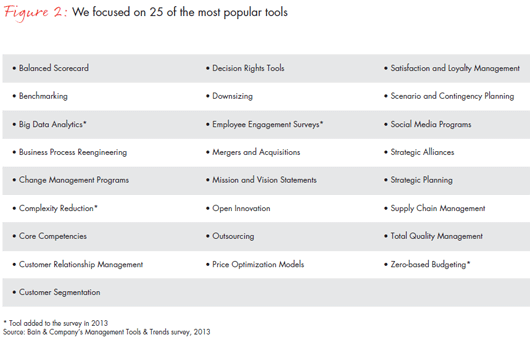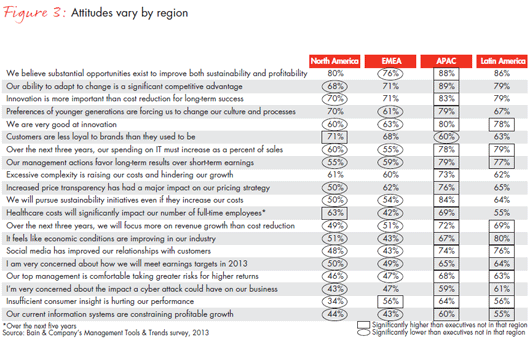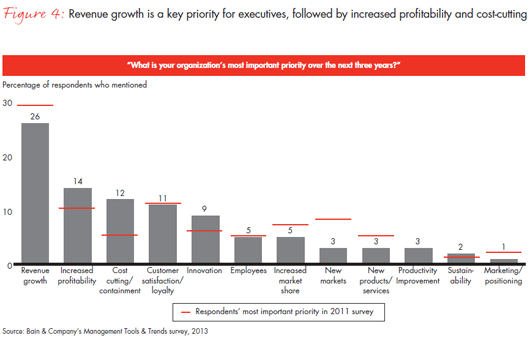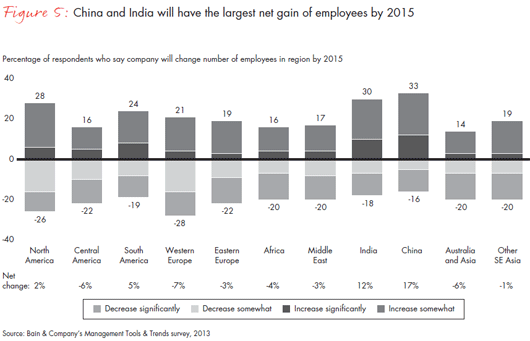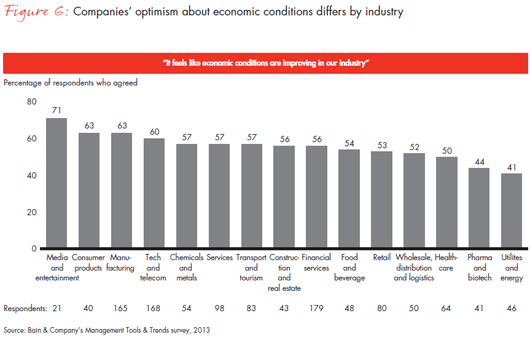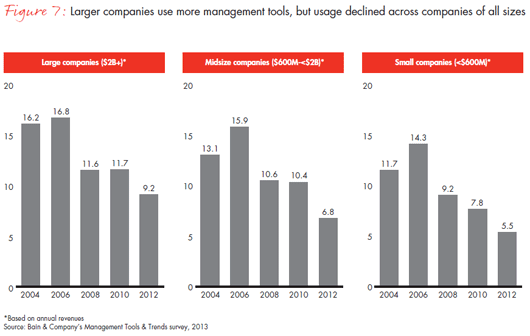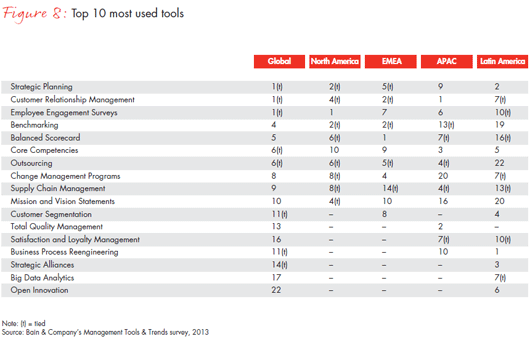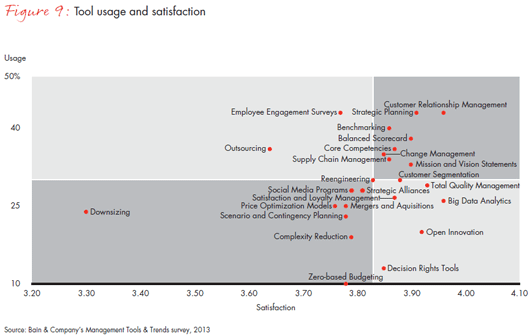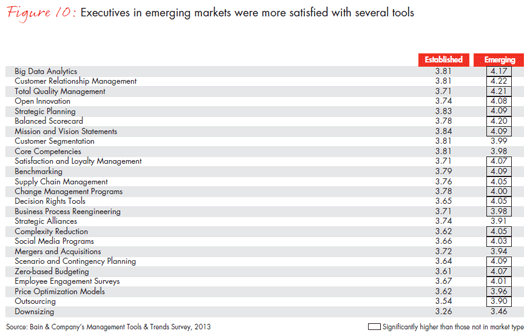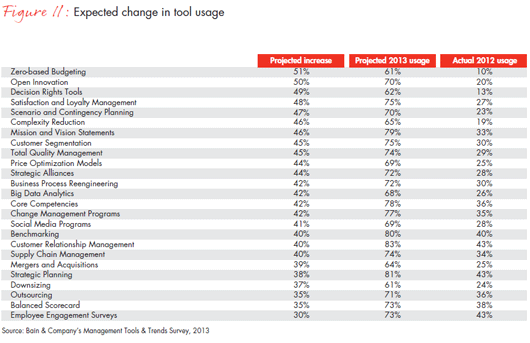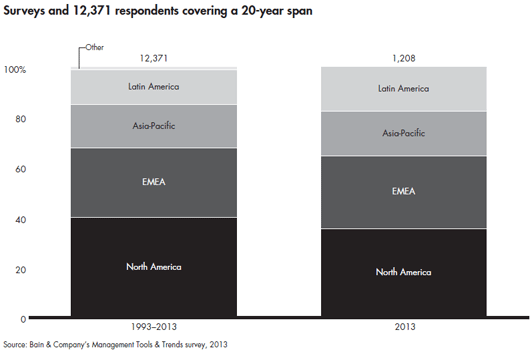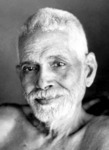Any competitive advantage—whether it lasts two seasons or two decades—goes through the same life cycle. But when advantages are fleeting, firms must rotate through the cycle much more quickly and more often, so they need a deeper understanding of the early and late stages than they would if they were able to maintain one strong position for many years.
A competitive advantage begins with a launch process, in which the organization identifies an opportunity and mobilizes resources to capitalize on it. In this phase a company needs people who are capable of filling in blank sheets of paper with ideas, who are comfortable with experimentation and iteration, and who probably get bored with the kind of structure required to manage a large, complex organization.
In the next phase, ramp up, the business idea is brought to scale. This period calls for people who can assemble the right resources at the right time with the right quality and deliver on the promise of the idea.
Then, if a firm is fortunate, it begins a period of exploitation, in which it captures profits and share, and forces competitors to react. At this point a company needs people who are good at M&A, analytical decision making, and efficiency. Traditional established companies have plenty of talent with this skill set.
Often, the very success of the initiative spawns competition, weakening the advantage. So the firm has to reconfigure what it’s doing to keep the advantage fresh. For reconfigurations, a firm needs people who aren’t afraid to radically rethink business models or resources.
In some cases the advantage is completely eroded, compelling the company to begin a disengagement process in which resources are extracted and reallocated to the next-generation advantage. To manage this process, you need people who can be candid and tough-minded and can make emotionally difficult decisions.
For sensible reasons, companies with any degree of maturity tend to be oriented toward the exploitation phase of the life cycle. But as I’ve suggested, they need different skills, metrics, and people to manage the tasks inherent in each stage of an advantage’s development. And if they’re creating a pipeline of competitive advantages, the challenge is even more complex, because they’ll need to orchestrate many activities that are inconsistent with one another.
Milliken & Company is a fascinating example of an organization that managed to overcome the competitive forces that annihilated its industry (albeit over a longer time period than some companies today will be granted). By 1991 virtually all of Milliken’s traditional competitors had vanished, victims of a surge in global competition that moved the entire business of textile manufacturing to Asia. In Milliken, ones sees very clearly the pattern of entering new, more promising arenas while disengaging from older, exhausted ones. Ultimately, the company exited most of its textile lines, but it did not do so suddenly. It gradually shut down American plants, starting in the 1980s and continuing through 2009. (Every effort was made, as best I can tell, to reallocate workers who might have suffered as a result.) At the same time the company was investing in international expansion, new technologies, and new markets, including forays into new arenas to which its capabilities provided access. As a result, a company that had been largely focused on textiles and chemicals through the 1960s, and advanced materials and flameproof products through the 1990s, had become a leader in specialty materials and high-IP specialty chemicals by the 2000s.
Facing the Brutal TruthIn a world that values exploitation, people on the front lines are rarely rewarded for telling powerful senior executives that a competitive advantage is fading away. Better to shore up an existing advantage for as long as possible, until the pain becomes so obvious that there is no choice. That’s what happened at IBM, Sony, Nokia, Kodak, and a host of other firms that got themselves into terrible trouble, despite ample early warnings from those working with customers.
To compete in a transient-advantage economy, you must be willing to honestly assess whether current advantages are at risk. Ask yourself which of these statements is true of your company:
- I don’t buy my own company’s products or services.
- We’re investing at the same or higher levels and not getting better margins or growth in return.
- Customers are finding cheaper or simpler solutions to be “good enough.”
- Competition is emerging from places we didn’t expect.
- Customers are no longer excited about what we have to offer.
- We’re not considered a top place to work by the people we’d like to hire.
- Some of our very best people are leaving.
- Our stock is perpetually undervalued.
If you nodded in agreement with four or more of these, that’s a clear warning that you may be facing imminent erosion.
But it isn’t enough to recognize a problem. You also have to abandon many of the traditional notions about competitive strategy that will exacerbate the challenge of strategy reinvention.
Seven Dangerous MisconceptionsMost executives working in a high-velocity setting know perfectly well that they need to change their mode of operation. Often, though, deeply embedded assumptions can lead companies into traps. Here are the ones I see most often.
The first-mover trap. This is the belief that being first to market and owning assets create a sustainable position. In some businesses—like aircraft engines or mining—that’s still true. But in most industries a first-mover advantage doesn’t last.
The superiority trap. Almost any early-stage technology, process, or product won’t be as effective as something that’s been honed and polished for years. Because of that disparity, many companies don’t see the need to invest in improving their established offerings—until the upstart innovations mature, by which time it’s often too late for the incumbents.
The quality trap. Many businesses in exploit mode stick with a level of quality higher than customers are prepared to pay for. When a cheaper, simpler offer is good enough, customers will abandon the incumbent.
The hostage-resources trap. In most companies, executives running big, profitable businesses get to call the shots. These people have no incentive to shift resources to new ventures. I remember holding a Nokia product that was remarkably similar to today’s iPad—in about 2004. It hooked up to the internet, accessed web pages, and even had a rudimentary app constellation. Why did Nokia never capitalize on this groundbreaking innovation? Because the company’s emphasis was on mass-market phones, and resource allocation decisions were made accordingly.
The white-space trap.
When I ask executives about the biggest barriers to innovation, I often hear, “Well, these things fall between the cracks of our organizational structure.” When opportunities don’t fit their structure, firms often simply forgo them instead of making the effort to reorganize. For instance, a product manufacturer might pass up potentially profitable moves into services because they require coordination of activities along a customer’s experience, rather than by product line.
The empire-building trap. In a lot of companies, the more assets and employees you manage, the better. This system promotes hoarding, bureaucracy building, and fierce defense of the status quo; it inhibits experimentation, iterative learning, and risk taking. And it causes employees who like to do new things to leave.
The sporadic-innovation trap. Many companies do not have a system for creating a pipeline of new advantages. As a result, innovation is an on-again, off-again process that is driven by individuals, making it extraordinarily vulnerable to swings in the business cycle.
The assessment “Is Your Company Prepared for the Transient-Advantage Economy?” will give you a sense of whether your organization is vulnerable to these traps.
Strategy for Transient Advantage: The New Playbook
Companies that want to create a portfolio of transient advantages need to make eight major shifts in the way that they operate.
1: Think about arenas, not industries. One of the more cherished ideas in traditional management is that by looking at data about other firms like yours, you can uncover the right strategy for your organization. Indeed, one of the most influential strategy frameworks, Michael Porter’s five forces model, assumes that you are mainly comparing your company to others in a similar industry. In today’s environment, where industry lines are quickly blurring, this can blindside you.
I’ve seen untraditional competitors take companies by surprise over and over again. In the 1980s, for instance, no money-center bank even saw the threat posed by Merrill Lynch’s new cash-management accounts, because they weren’t offered by any bank. Millions in deposits flew out the door before the banks realized what was going on. But in recent years, the phenomenon has become more common. Google’s moves into phone operating systems and online video have created consternation in traditional phone businesses; retailers like Walmart have begun edging into health care; and the entire activity of making payments is being disrupted by players from a variety of industries, including mobile phone operators, internet credit providers, and swipe-card makers.
Today strategy involves orchestrating competitive moves in what I call “arenas.” An arena is a combination of a customer segment, an offer, and a place in which that offer is delivered. It isn’t that industries aren’t relevant anymore; it’s just that industry-level analysis doesn’t give you the full picture. Indeed, the very notion of a transient competitive advantage is less about making more money than your industry peers, as conventional definitions would have it, and more about responding to customers’ “jobs to be done” (as Tony Ulwick would call it) in a given space.
2: Set broad themes, and then let people experiment. The shift to a focus on arenas means that you can’t analyze your way to an advantage with armies of junior staffers or consultants anymore. Today’s gifted strategists examine the data, certainly, but they also use advanced pattern recognition, direct observation, and the interpretation of weak signals in the environment to set broad themes. Within those themes, they free people to try different approaches and business models. Cognizant, for instance, clearly spells out the competitive terrain it would like to claim but permits people on the ground considerable latitude within that framework. “The Future of Work” is Cognizant’s umbrella term for a host of services intended to help clients rethink their business models, reinvent their workforces, and rewire their operations—all with the firm’s assistance, of course.
3: Adopt metrics that support entrepreneurial growth. When advantages come and go, conventional metrics can effectively kill off innovations by imposing decision rules that make no sense. The net present value rule, for instance, assumes that you will complete every project you start, that advantages will last for quite a while, and that there will even be a “terminal value” left once they are gone. It leads companies to underinvest in new opportunities.
Instead, firms can use the logic of “real options” to evaluate new moves. A real option is a small investment that conveys the right, but not the obligation, to make a more significant commitment in the future. It allows the organization to learn through trial and error. Consider the way Intuit has made experimentation a core strategic process, amplifying by orders of magnitude its ability to venture into new spaces and try new things. As Kaaren Hanson, the company’s vice president of design innovation, said at a recent conference at Columbia Business School, the important thing is to “fall in love with the problem you are trying to solve” rather than with the solution, and to be comfortable with iteration as you work toward the answer.
4: Focus on experiences and solutions to problems. As barriers to entry tumble, product features can be copied in an instant. Even service offerings in many industries have become commoditized. Once a company has demonstrated that demand for something exists, competitors quickly move in. What customers crave—and few companies provide—are well-designed experiences and complete solutions to their problems. Unfortunately, many companies are so internally focused that they’re oblivious to the customer’s experience. You call up your friendly local cable company or telephone provider and get connected to a robot. The robot wants to know your customer number, which you dutifully provide. Eventually, the robot decides that your particular problem is too difficult and hands you over to a live person. What’s the first thing the person wants to know? Yup, your customer number. It’s symptomatic of the disjointed and fragmented way most complex organizations handle customers.
Companies skilled at exploiting transient advantage put themselves in their customers’ place and consider the outcome customers are trying to achieve. Australia’s Brambles has done a really great job of this even though it is in a seemingly dull industry (managing the logistics of pallets and other containers). The company realized that one of grocers’ biggest costs was the labor required to shelve goods delivered to their stores. Brambles designed a solution: plastic bins that can be filled by growers right in the fields and lifted directly from pallets and placed on shelves, from which customers can help themselves. It has cut labor costs significantly. Better yet, fruits and vegetables arrive at the point of purchase in better shape because they aren’t manhandled repeatedly as they go from field to box to truck to warehouse to storage room to shelf. Although seemingly low-tech, this initiative and others like it have generated substantial profits and steady growth for the company—not to mention customers’ appreciation.
5: Build strong relationships and networks. One of the few barriers to entry that remain powerful in a transient-advantage context has to do with people and their personal networks. Indeed, evidence suggests that the most successful and sought-after employees are those with the most robust networks. Realizing that strong relationships with customers are a profound source of advantage, many companies have begun to invest in communities and networks as a way of deepening ties with customers. Intuit, for example, has created a space on its website where customers can interact, solve one another’s problems, and share ideas. The company goes so far as to recognize exemplary problem solvers with special titles and short profiles of them on the site. Amazon and TripAdvisor both make contributions from their communities a core part of the value they offer customers. And of course, social networks have the power to enhance or destroy a firm’s credibility in nanoseconds as customers enjoy an unprecedented ability to connect with one another.
Firms that are skilled at managing networks are also notable for the way they preserve important relationships. Infosys, for instance, is choosy about which customers it will serve, but it maintains a 97% customer retention rate. Sagentia, a technical consultancy in the UK, is extremely conscientious about making sure that people who are let go remain on good terms with the firm and land well in new positions. Even at a large industrial company like GE, the senior leaders spend inordinate amounts of time building and preserving relationships with other firms.
6: Avoid brutal restructuring; learn healthy disengagement. In researching firms that effectively navigate the transient-advantage economy, I was struck by how seldom they engaged in restructuring, downsizing, or mass firings. Instead, many of them seemed to continually adjust and readjust their resources. At Infosys, I was told, people don’t really believe in “chopping things off.” Rather, when an initiative is wound down, they say it “finds its way to insignificance.”
Sometimes, of course, downsizing or sudden shifts can’t be avoided. The challenge then is disengaging from a business in the least destructive, most beneficial way. Netflix’s efforts to get out of the DVD-shipping business and into streaming movies, which its management passionately believes represents the future, offer an interesting lesson in the wrong way to do this. In 2011 the company’s management made two decisions that infuriated customers. It imposed a massive price increase across the board, and it split the DVD and streaming businesses into two separate organizations, which forced customers to duplicate their efforts to find and purchase movies. Let’s assume that Netflix’s leaders are right that eventually the DVD part of the business will shrivel up. How might the firm have exited more gracefully?
Preparing customers to transition away from old advantages is a lot like getting them to adopt a new product, but in reverse. Not all customers will be prepared to move at the same rate. There is a sequence to which customers you should transition first, second, and so on.
If, rather than raising prices for everybody, Netflix had selectively offered price discounts to those who would drop the DVD service, it would have moved that segment over to the new model. Then it could have gone to the “light user” DVD consumers and suggested that instead of getting a new DVD anytime they wanted it, they would get one once a month, say, for the same price. If they wanted the instant service, their prices would go up. That would shift another group to lower DVD usage. Then when those segments started to realize that all-streaming wasn’t so bad, Netflix could have instituted the big price increase for the mainstream buyer. The point is that in trying to force many customers to move faster than they were prepared to, the company enraged them.
7: Get systematic about early-stage innovation. If advantages eventually disappear, it only makes sense to have a process for filling your pipeline with new ones. This in turn means that, rather than being an on-again, off-again mishmash of projects, your innovation process needs to be carefully orchestrated.
Companies that innovate proficiently manage the process in similar ways. They have a governance structure suitable for innovation: They set aside a separate budget and staff for innovation and allow senior leaders to make go or no-go decisions about it outside the planning processes for individual businesses. The earmarked innovation budget, which gets allocated across projects, means that new initiatives don’t have to compete with established businesses for resources. Such companies also have a strong sense of how innovations fit into the larger portfolio, and a line of sight to initiatives in all different stages. They hunt systematically for opportunities, usually searching beyond the boundaries of the firm and its R&D department and figuring out what customers are trying to accomplish and how the firm can help them do it.
8: Experiment, iterate, learn. As I’ve said for many years, a big mistake companies make all the time is planning new ventures with the same approaches they use for more-established businesses. Instead, they need to focus on experimentation and learning, and be prepared to make a shift or change emphasis as new discoveries happen. The discovery phase is followed by business model definition and incubation, in which a project takes the shape of an actual business and may begin pilot tests or serving customers. Only once the initiative is relatively stable and healthy is it ramped up. All too often, in their haste to get commercial traction, companies rush through this phase; as a result whatever product they introduce has critical flaws. They also spend way too much money before testing the critical assumptions that will spell success or failure.
Leadership as OrchestrationNo leader could cognitively handle the complexity of scores of individual arenas, all at slightly different stages of development. What great leaders do is figure out some key directional guidelines, put in place good processes for core activities such as innovation, and use their influence over a few crucial inflection points to direct the flow of activities in the organization. This requires a new kind of leader—one who initiates conversations that question, rather than reinforce, the status quo. A strong leader seeks contrasting opinions and honest disagreement. Diversity increasingly becomes a tool for picking up signals that things may be changing. Broader constituencies may well become involved in the strategy process.
Finally, transient-advantage leaders recognize the need for speed. Fast and roughly right decision making will replace deliberations that are precise but slow. In a world where advantages last for five minutes, you can blink and miss the window of opportunity.
One thing about strategy hasn’t changed: It still requires making tough choices about what to do and, even more important, what not to do. Even though you are orchestrating scores of arenas, you can do only so many things. So defining where you want to compete, how you intend to win, and how you are going to move from advantage to advantage is critical. While we might be tempted to throw up our hands and say that strategy is no longer useful, I think the opposite conclusion is called for. It’s more important than ever. It just isn’t about the status quo any longer.























